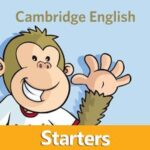Practica para tu examen B1
El examen B1 se enfoca en temas prácticos y relevantes para la vida diaria, como la educación, el trabajo, la salud, el transporte y el ocio. Los estudiantes deben ser capaces de entender conversaciones y mensajes relacionados con estos temas, y de comunicarse con fluidez y precisión en situaciones sociales y profesionales. También deben ser capaces de producir textos claros y coherentes sobre temas cotidianos, y de expresar opiniones y justificarlas en detalle.
El examen B1 es un nivel intermedio en el Marco Común Europeo de Referencia para las Lenguas (MCER) y se considera un nivel de umbral para la competencia lingüística independiente. Los estudiantes que pasan el examen B1 demuestran que tienen las habilidades lingüísticas necesarias para comunicarse efectivamente en una amplia variedad de situaciones cotidianas y profesionales, y que están preparados para continuar su aprendizaje del idioma a niveles más avanzados
#1. Which of the following words is an adjective?
#2. Which tense is used to talk about actions happening at the moment?
#3. Which of the following is a conjunction?
#4. Which of the following is a preposition?
#5. Which of the following is a superlative adjective?
#6. Which of the following modal verbs is used to express possibility?
#7. Which of the following is an adverb of frequency?
#8. Which of the following is a phrasal verb?
#9. Which of the following is a comparative adjective?
#10. Which of the following is an irregular verb in the past tense?
#11. Which of the following is a countable noun?
#12. Which of the following is a determiner?
#13. Which of the following modal verbs is used to make a suggestion?
#14. Which of the following verb tenses is used to talk about a completed action in the past?
#15. Which of the following is a preposition of place?
#16. Which of the following is a pronoun?
#17. Which of the following is a conjunction?
#18. Which of the following modal verbs is used to express possibility or uncertainty?
#19. Which of the following is a past participle?
Results
Felicidades Tienes un nivel intermedio en ingles!!!
Intenta con este examen!!








No logre pasar pero esta muy bueno el test para practicar mis habilidades